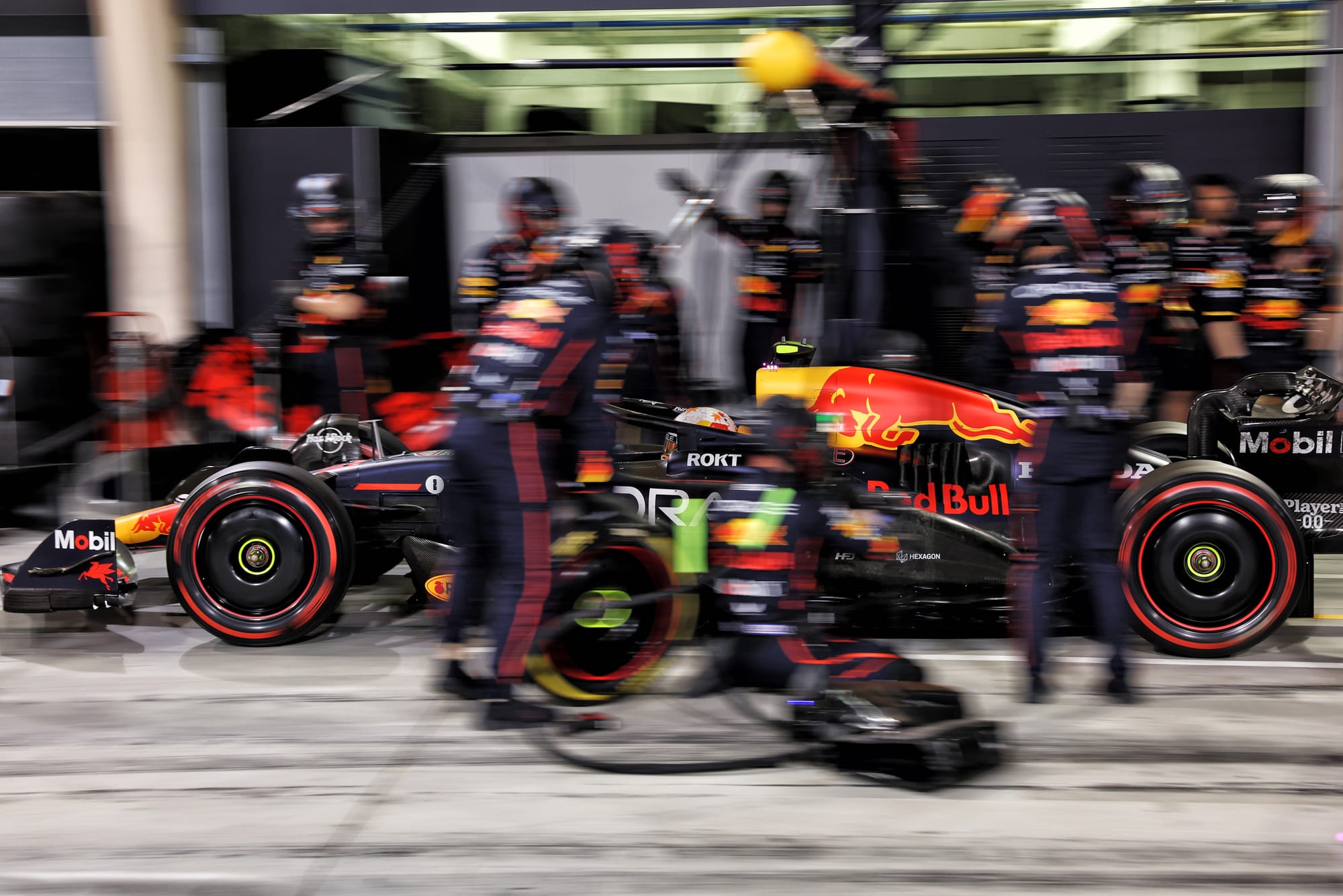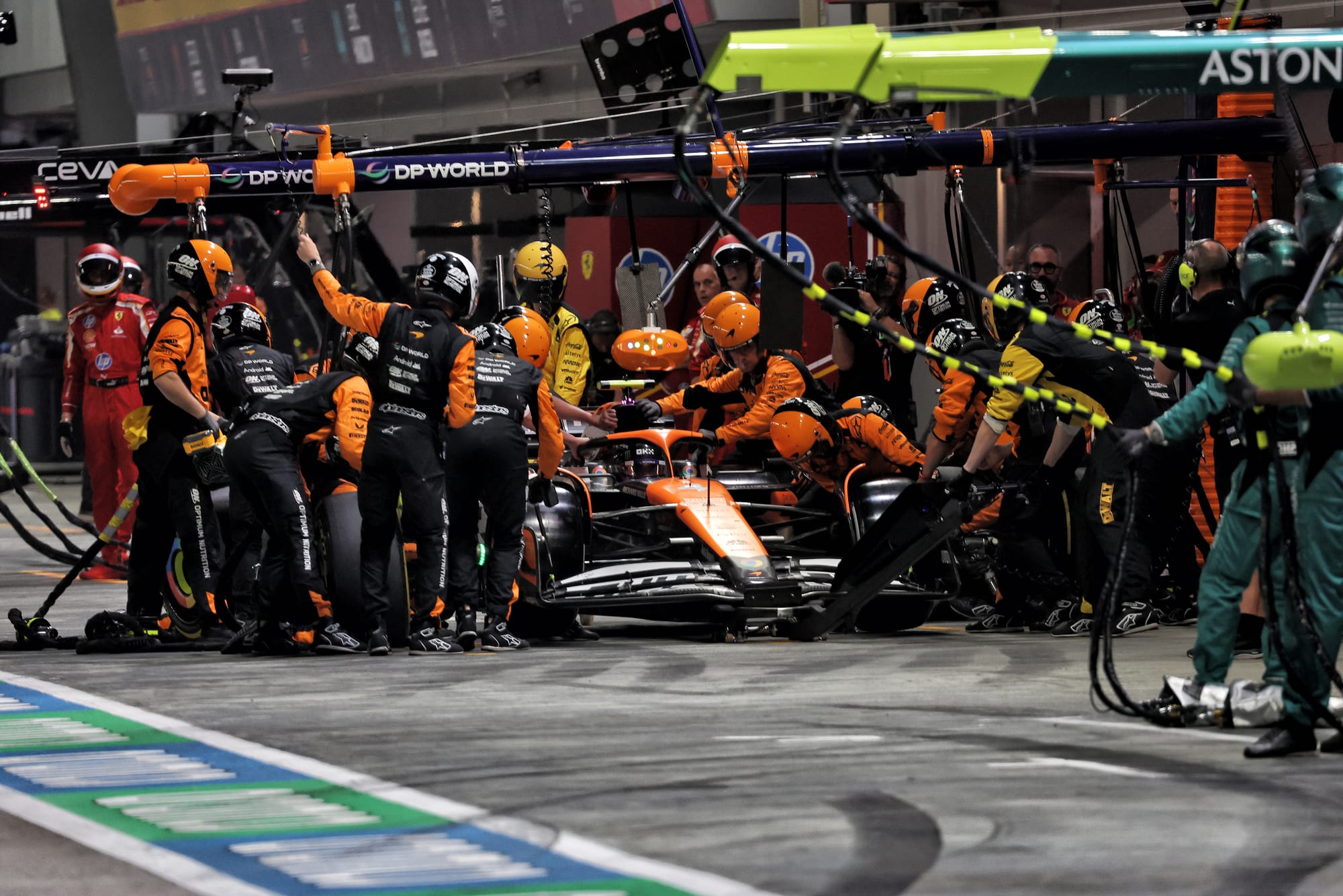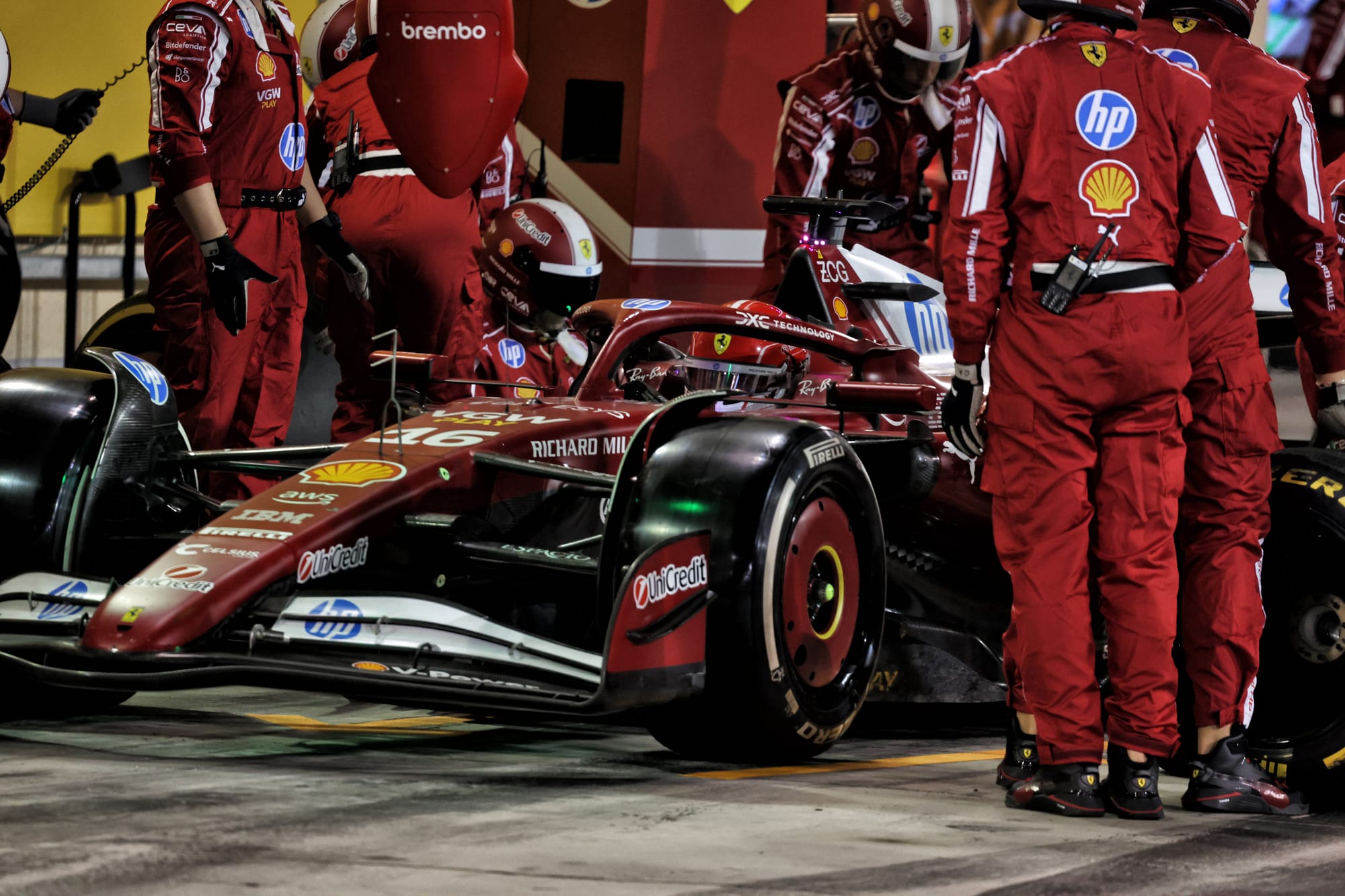F1 to raise pitlane speed limit to reduce one stop races
The Race can reveal the left-field solution the FIA is set to introduce at some F1 races this year to increase the number of pitstops


The FIA is set to raise the pitlane speed limit at some Formula 1 races this year as part of an effort to increase the likelihood of more pitstops, The Race can reveal.
The opening phase of the 2025 season has raised concerns about one-stop races becoming the norm – which limits strategic variations and goes against the preference for two-stoppers.
F1 CEO Stefano Domenicali met with Pirelli’s motorsport director Mario Isola at the Saudi Arabian Grand Prix to discuss the ongoing situation and what can be done to spice things up for the remainder of the season.
Moves are already underway to choose more aggressive softer rubber in a bid to force more pitstops, while another route could be to space out the compounds to further make things more challenging.
However a more left-field idea has gathered momentum and now looks set to be put into action.
As first reported by The Race, that solution is to reduce the time it takes for a car to stop for tyres – thereby shifting the strategy mathematics to make an extra stop for fresh rubber more viable.
While the actual pitstop time is already at the limit, the area of focus is in raising the pitlane speed limit.
Early analysis showed that if the pitlane speed limit is raised by 20km/h – so potentially from 80km/h to 100km/h – then it would reduce the pitstop times by around five seconds.
However following such a path had many complications - especially because of the wider safety implications of lifting an 80km/h limit that has been in place for decades
But now, following discussions between teams and the FIA, an alternative route has gathered support and looks set to be implemented at some races this year.
The idea is that for those races where the speed limit has previously been reduced to 60km/h because of narrow pitlanes, then the limit will be kept at the regular 80km/h, providing that extra provisions can be made to ensure that safety is not compromised.
This could be achieved through a reconfiguration of the pitlane lanes, or even moving the pitwall out a bit.
While no final decision has been taken about which races will be approved for the speed limit change, the events on the calendar that currently have their speed limit reduced to 60km/h include Australia, Monaco, Zandvoort and Singapore.
As an example, the 20km/h hike from 60km/h change could trigger a significant reduction in pitlane times at Singapore.
Based on the current pitlane times, a 60km/h stop at the Marina Bay circuit takes 29 seconds. Were the limit to be raised to 80km/h, then this would be reduced to around 22-23 seconds.
With alternative strategies becoming more attractive if there is just a three-second difference in them, then a five or six-second improvement in pitstops could be enough to shift things in favour of a two-stopper.
The other attraction of the FIA only changing the speed limits for those races where 60km/h has been the norm is that it will not require any revisions to the F1 regulations.
Article 34.7 of F1’s Sporting Regulations states: “A speed limit of 80km/h will be imposed in the pitlane during the whole competition. However, this limit may be amended by the Race Director following a recommendation from the Safety Delegate.”
Evaluation of which races will have their pitlane speed limits changed is now being conducted by the FIA, with the decisions to be communicated to teams ahead of those events.
Ferrari driver Charles Leclerc felt that there was definitely scope for the pitlane speed limit to be raised at some venues.
Asked by The Race for his thoughts on the matter, Leclerc said: “I have never heard of it [the idea], but definitely not for all races.
“I don't think that will be sensible for all races. I felt like there are some tracks where it could work, but to be honest, I never thought about even doing this.
"I'll have to look a little bit more into details and what are the implications of all these things. But as a first thought, probably on some races, it can make sense, yes.”













































































